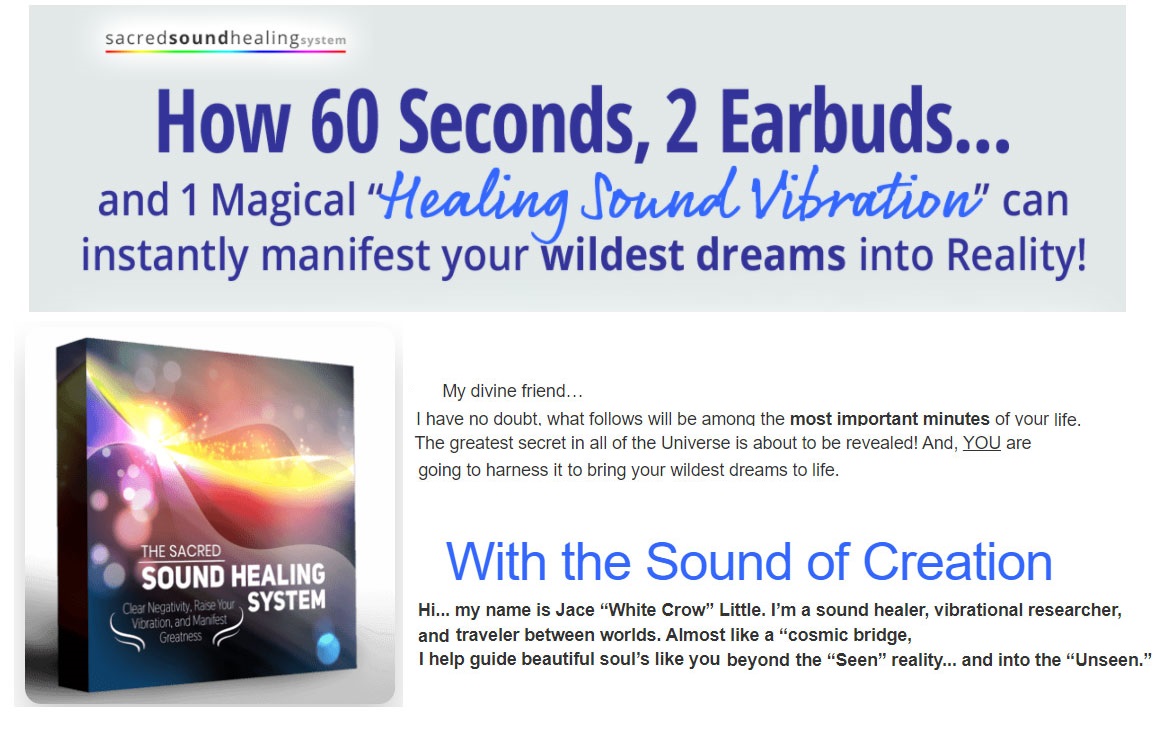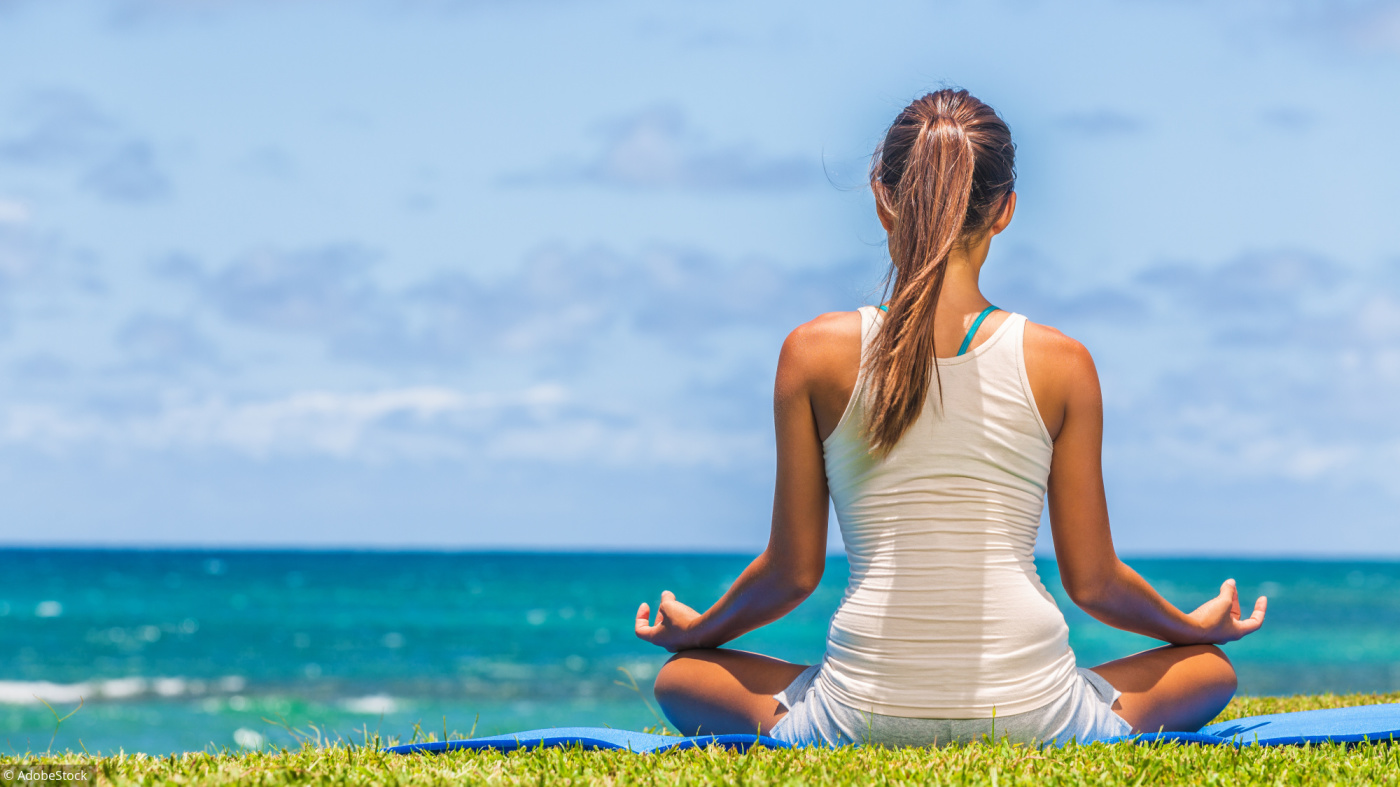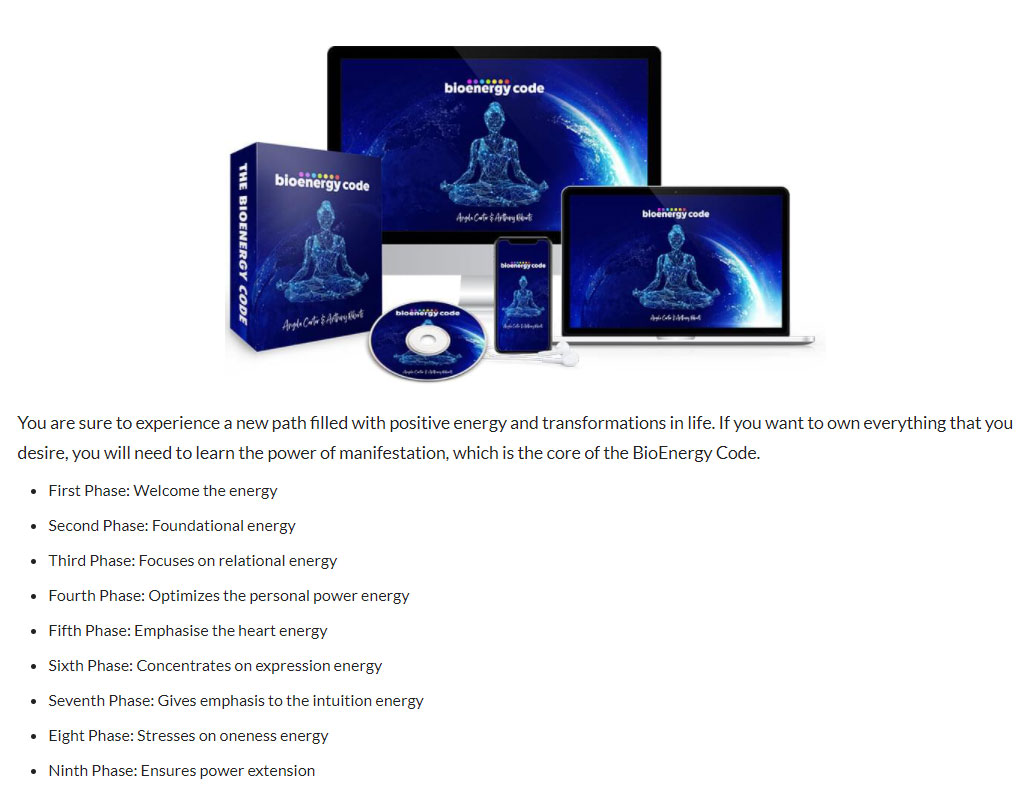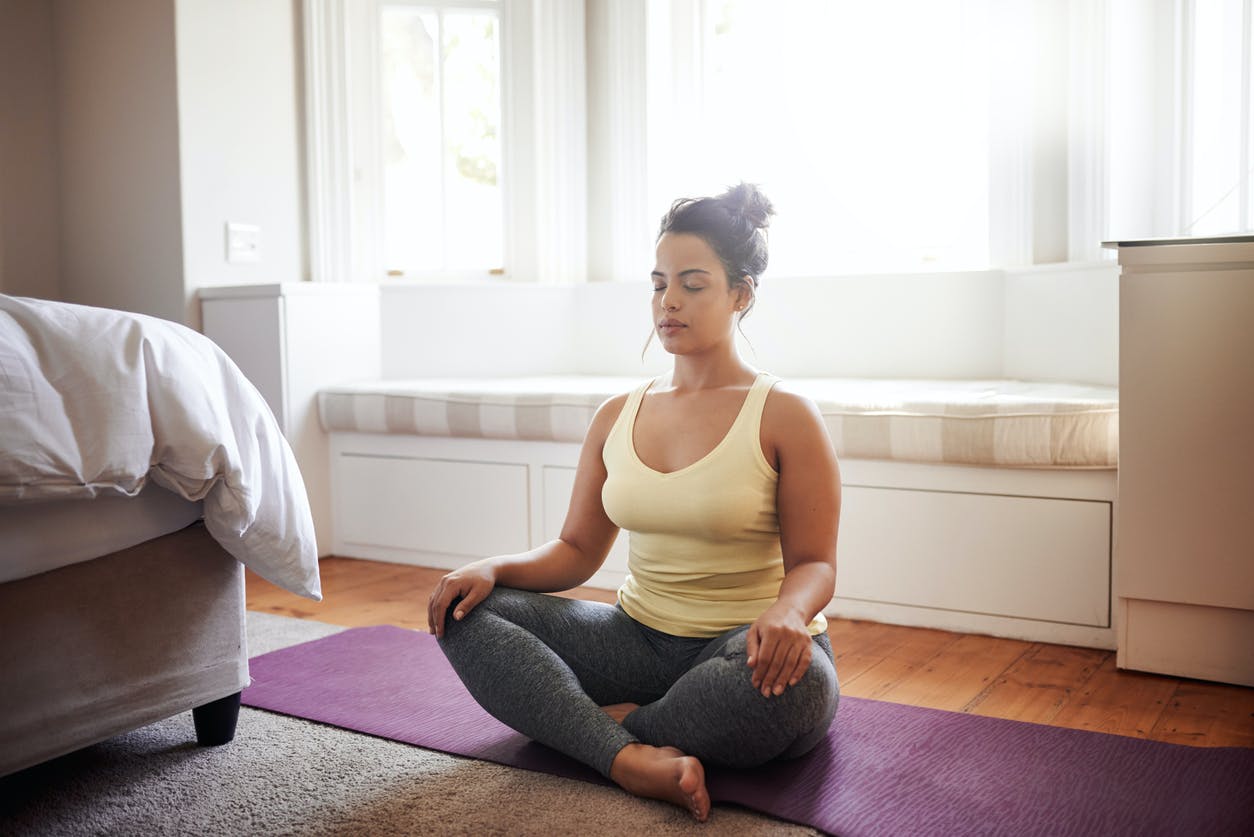How to practice meditation
Postures, breathing, frequency... Using your mental strength to find peace is easier than you think. Find out how to practice meditation on a daily basis.
Meditation
When stress suffocates us, we are like the mountain surrounded by clouds. To meditate is to let the wind clear the sky and reveal the azure. Tinged with oriental poetry, the metaphor is by Marc de Smedt, our guide for the session that follows. Journalist, writer and director of the quarterly magazine "Nouvelles Clés", he was initiated into Zen meditation by the Japanese master Taisen Deshimaru. Engaged in a spiritual quest, he nevertheless considers that it is not necessary to be religious to meditate. From a purely secular perspective, he suggests that one can "integrate meditation into one's daily hygiene practices. To meditate is then to offer to the spirit the care that one usually gives to the body: a shower to purify it, a little gymnastics to strengthen it.
From Zen to tantra, from yoga to tai chi, the techniques are varied but all rest on the same foundations: a correct posture or movement, a work of breathing, an attentive presence at the moment. Because the subject is vast, we will only deal here with still meditation, which is easier to practice at home. "The exercise is simpler than one imagines, assures our expert. Many people miss out on the benefits because they set the bar too high. "The idea is not to suffer martyrdom for two hours a day in the lotus position, but to allow yourself, two or three times a week (and in the posture you can hold!) a small quarter of an hour of serenity. Practiced with regularity, it allows the "meditator" to register in a better consciousness of oneself, in a more harmonious presence in the world.
The watchword of this session will therefore be: "Try it. "Don't try to conform strictly to what is proposed here. Instead, explore your own path until you find what works best for you. "The body knows what it needs," says Marc de Smedt. The body knows what it needs," says de Smedt. "Let it find the right moment, the posture it feels anchored in, the breath that regenerates it. Accept to grope. There's nothing to accomplish, just to be. Here and now.

1 - Find the right moment
It all depends on what you expect from it. You can meditate in the morning to start the day in better shape; in the evening to get rid of accumulated tensions; or at noon to recharge your batteries halfway through. Once you have understood the process, which is basically a reminder of yourself and your conscious breathing, you can meditate anywhere (in the subway, at the office) and anytime (while eating, cooking), as soon as you feel the need to gather.
The ideal is to choose a specific time and duration (for example, just before breakfast for ten minutes) and try to stick to it. Don't shorten your sessions if they are strenuous, don't extend them when they are more pleasant. Learning consistency is part of the process.
2 - Create the right environment
Try to always meditate in the same place, preferably in a quiet room, sitting facing a wall. In general, try to avoid anything that might distract your gaze or fuel your thoughts.
You can create a more soothing atmosphere by installing a carpet, lighting a candle or burning incense. Choose comfortable, loose-fitting clothing that you will find at each meditation session, and don't forget to take off your shoes. You can also choose a discreet musical background (without words) to accompany you.
3 - Relax
Before entering into meditation, you can start with a time of relaxation. Lie on your back, stretch, yawn. With your eyes closed, breathe through your nose, calmly and deeply. Relax your belly, let it inflate when you inhale and push the air out when you exhale. Become aware of your supports (heels, calves, buttocks, shoulder blades, back of the skull, elbows, palms...) and their weight on the ground. Concentrate on your toes, imagine how they unfold, feel their tensions, release them.
Do the same for each part of the body, going up along the legs, the kidneys, the back to the nape of the neck, then down along the arms to the fingers. Let your joints and tissues relax. Feel yourself floating. When you're ready, open your eyes and stare at a point on the ceiling with clear eyes. Stand up.
Before and after meditation, do "gassho": join your hands at face level and bow as a sign of concentration and respect for what you are going to do, or for what you have just done.
4 - Choose your posture
In the Buddhist tradition, we generally meditate in the lotus (or "zazen") position. Sitting on a firm, round cushion (the "zafu"), cross your legs while keeping your knees on the ground, your left foot resting on your right thigh and vice versa, with the soles of your feet facing the sky. It is in this position that the Buddha, motionless as a mountain, attained enlightenment. No need to contort yourself if you lack flexibility. Simply remember that the posture must allow you to find by the body what the disposition of the mind should be: stability, straightness, openness.
You can therefore also opt for the half-lotus (one leg lies flat on the calf of the other), the happy position (the sole of each foot is inserted between the thigh and the calf of the other leg), or the beneficial posture (the ankles are brought back under the pubis, the soles of the feet against each other). You can finally kneel on the zafu or sit on a chair without leaning back, feet flat on the floor.
In any case, make sure to keep your back straight by slightly arching your kidneys to deploy the spine and free the solar plexus. Slightly tuck in your chin and relax your shoulders.
Place your cupped hands against your abdomen in the energy zone of the "hara" (three fingers horizontally below the navel), the back of the left hand resting in the right palm. The thumbs, horizontally, touch each other at the tip. Your hands thus take the shape of an egg, symbol of the origin of life.
After a while, you may feel some tension. The discomfort often passes by itself as the muscles relax. Otherwise, change your position.

5 - Adjust your look
In principle, the eyes are half-closed, the gaze is set - without staring - one meter in front of you. The idea is to close the eyelids sufficiently to bring the attention back to the interiority, while remaining connected to the surrounding world. To begin with, if your gaze is constantly diverted by an object or a light, it is better to close your eyes. If, on the contrary, you feel close to drowsiness, open them wide to regain your alertness.
6 - Concentrate on your breath
Breathing is, after posture, the second pillar of meditation. The "anapana" technique (the "coming and going of the breath") recommends focusing on the "nostril gate", the triangular area that extends from the tip of the nose to the upper lip. It is simply a matter of becoming aware of your breathing, letting it be what it is, sometimes fluid, sometimes jerky, until it slows down and becomes lighter. In Zen, the focus is on exhalation: we try to push the breath towards the hands and the hara, to fight our tendency to breathe only from the top of the lungs. Diffused in the belly, the breath energetically chases away tensions and brings back a feeling of harmony.
This exercise of concentration on breathing helps to fight against the dispersion of thoughts. At the same time as it soothes it, it teaches the mind how to gather and strengthen itself.
7 - Purify your mind
The work on the body, through posture and breathing, aims to discipline the body to better focus on the mind.
"Vipassana" (the penetrating vision), one of the oldest Buddhist techniques in India, aims, beyond illusions, to find the true nature of the mind. It is about letting thoughts arise without forcing or holding them back, without condemning or approving them. Just observe what appears as the images of a film appearing and disappearing. Let your dark side invade your consciousness and then leave you as pus comes out of the wound. Accept pain, anger, fear or shame. Try to learn from it, invoking the antidote to what makes you suffer (compassion against hatred, joy against pain, etc.). Soak it up. If the exercise is too painful, refocus on your breathing until your mind is ready to continue.
Listening to oneself recite
Are thoughts jostling, scattering or holding false views? To undermine these mental processes, the "yogic" tradition uses mantras. These are the repetitive, whispered or silent recitation of a sound (the famous "om") or a sacred formula ("Shri Ram, Jai Ram"). The mantra is pronounced in the longest possible exhalation. Its symbolic charge and vibratory power help to empty the consciousness to leave a feeling of peace.
Zen tradition also seeks to divert the intellect with the help of koans, which are the enunciation of a paradox or enigma ("The donkey looks at the well, the well looks at the donkey. Don't run away"). But while mantras lead to the dissolution of thought, koans, on the contrary, compel the "meditator" to go to the end of his reflection in order to hit a wall. In both cases, the mind is relieved of its daily agitation.


